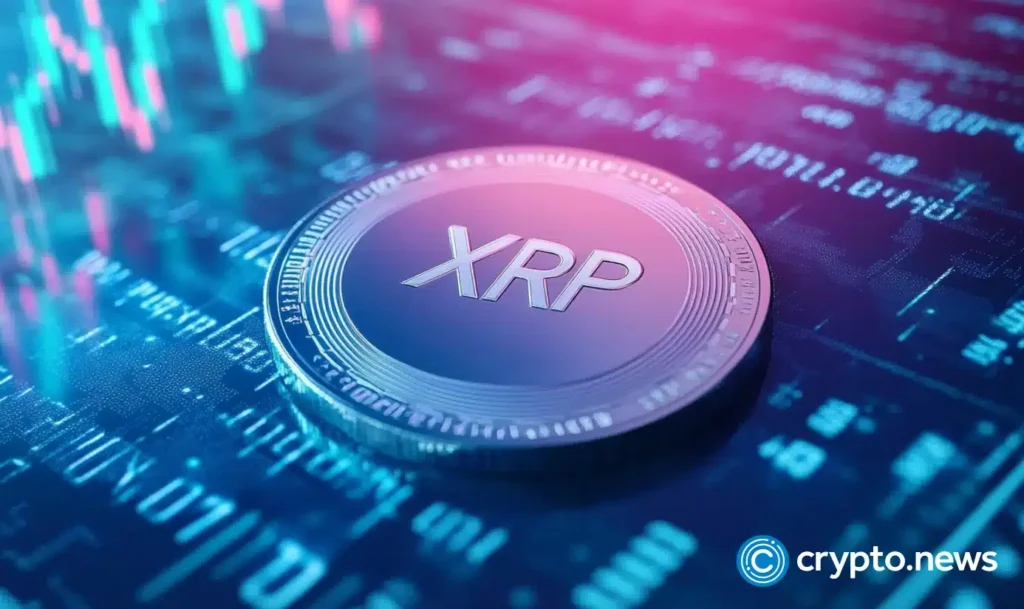Disclosure: This article does not represent investment advice. The content and materials featured on this page are for educational purposes only.
As crypto payments enter a new growth phase, Digitap is emerging as a standout altcoin with its live app, no-KYC onboarding, and fast-selling presale redefining how fiat and crypto connect.
- Digitap’s omni bank model merges blockchain transparency with fintech ease, offering instant crypto-fiat transfers and an integrated payment card.
- Over 60 million TAP tokens have been sold, raising nearly $800,000 as investors back its real-world payment utility and deflationary tokenomics.
- Unlike XRP and Stellar, which focus on institutions and NGOs, Digitap empowers individuals directly with user-owned financial tools and staking rewards.
Payments are once again becoming the heart of crypto’s next expansion phase. From global remittances to instant on-chain settlements, the demand for borderless money movement is driving innovation. While legacy networks like Ripple (XRP) and Stellar (XLM) have long held dominance, new players are entering the space with ambitious ideas.
Among them, Digitap (TAP) is quickly becoming one of the best altcoins to invest in, thanks to its live product, zero-KYC onboarding, and strong presale momentum. Over 60 million tokens have already been sold, with nearly $800,000 raised, a sign of growing confidence in its omni bank model that merges fiat and crypto into one system.
Digitap: The new standard in digital finance
Digitap stands out because it’s not just another presale. The platform already has a live working app, available on both the Apple App Store and Google Play Store. Users can download it, create an account, move funds between fiat and crypto, and even spend with the integrated payment card. Few projects in the presale stage ever reach this level of readiness.
Its unique omni bank model merges fintech convenience with blockchain transparency. The app includes instant crypto-to-fiat conversions, non-custodial wallets, and zero-KYC onboarding for eligible regions.
This accessibility opens the door for the 1.4 billion unbanked individuals typically excluded from traditional finance systems and enhances and redefines payments for remote work professionals.
At the time of writing, the TAP presale lists tokens at $0.0194, with the next stage set to jump to $0.0268, a 38% increase. The tokenomics behind Digitap are equally strong. 50% of platform profits are dedicated to burning tokens and rewarding stakers, making it both deflationary and community-driven.
Market analysts increasingly classify TAP among the top cryptos to buy heading into 2025, particularly as it addresses real payment needs with a working solution. In an environment where most altcoins rely on promises, Digitap delivers functionality.
XRP: The bridge between banks and blockchain
Ripple’s XRP remains one of the most recognized assets in crypto payments. Designed for cross-border liquidity and fast settlement, it continues to be used by institutional players, including banks and payment processors. XRP currently trades near $2.26, down about 20% after the wider market downturn.
XRP’s strength lies in its established network. It provides liquidity between financial institutions, removing the need for pre-funded accounts in foreign markets. This approach allows banks to move funds quickly and cheaply compared to traditional SWIFT transfers. However, its heavy reliance on partnerships with large financial institutions also limits its reach among retail users.
The system is efficient, though it remains centralized at the corporate level, making it less accessible for smaller or unbanked participants. For long-term investors, XRP’s appeal lies in stability and predictable adoption. It’s a secure play for those wanting exposure to institutional use cases.
Stellar: Designed for everyday payments
Stellar (XLM) approaches payments from a different angle. Built for low-cost, high-volume transfers, it targets remittance corridors, humanitarian projects, and regions with limited banking infrastructure. Its lightweight design and micro-fee structure make it perfect for transactions under a dollar, where speed and affordability matter most.
XLM currently trades around $0.30, reflecting modest but steady growth. NGOs and fintech startups often use it to distribute funds or handle cross-border payments, particularly in regions where banking services are scarce. Its open network and simplicity attract small developers and businesses seeking to test blockchain solutions without complex integration.
Still, Stellar faces challenges. Its ecosystem lacks the diversity of newer projects, and its developer activity has slowed compared to the broader market. Without new, large-scale partnerships or retail traction, XLM’s upside may be moderate in comparison to higher-growth tokens.
The future of payments is user-owned
Each of these payment tokens represents a different philosophy. XRP is top-down, it builds through institutions. Stellar is middle-out, connecting NGOs and small payment networks. Digitap is bottom-up, empowering individual users directly with financial tools.
In terms of scalability and transaction speed, all three perform well, but only Digitap combines these traits with a working consumer product and staking economy. Its real-world traction could outpace older systems reliant on slow institutional processes.
XRP and Stellar paved the way for blockchain settlements, but Digitap builds on those foundations to create something more inclusive. With its live app, transparent burn model, and strong presale metrics, it sits at the intersection of crypto and everyday banking.
For investors looking for the best altcoins to invest in, Digitap isn’t just another project, it’s an operational ecosystem positioned for scale during a revolutionary time in the payments industry.
To learn more about Digitap, visit the presale, website, and socials.
Disclosure: This content is provided by a third party. Neither crypto.news nor the author of this article endorses any product mentioned on this page. Users should conduct their own research before taking any action related to the company.



